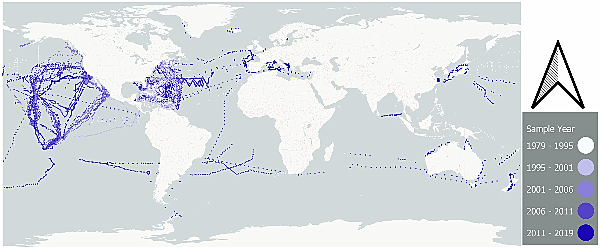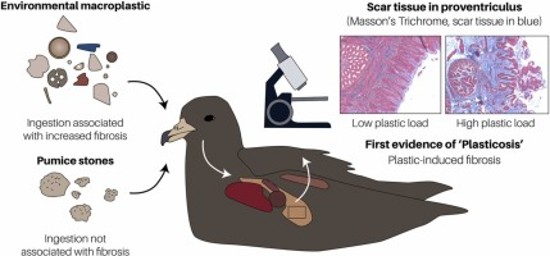A recently published study appearing in the journal PLOS ONE has found since 2005 a rapid increase in plastic particles in the oceans of the world. The data was collected from 11,777 surface water sampling stations. The research covers the period from 1995 to 2019 and estimates that between 1.1 and 4.9 million tons of floating plastic could be found in the upper water column of the ocean. See the distribution of plastic from the sampling stations in the map included below. Without intervention, the study estimated the volume of plastic would increase 2.6 times by 2040.

The authors of the study stated that the environmental challenge begins with standardized monitoring and a global enforceable international agreement to stop plastic emissions.
Is Plastic an Environmental Hazard?
Plastic is one of the many products arising from the Industrial Revolution which began in the mid-19th century. Human-created synthetic plastics first appeared just prior to World War One. The material really came into large-scale use after World War Two where it replaced glass and other container materials for countless consumer products.
Discarded plastic persists in the environment for decades, if not centuries. A plastic water bottle tossed in the ocean can take up to 500 years to disintegrate into its chemical components. But before that, it breaks up and degrades into variable-sized particles and eventually microplastics that get ingested by marine wildlife, seabirds, and us.
A 2019 study entitled “Human Consumption of Microplastics,” appearing in the Journal, Environmental Science & Technology estimates that the average adult ingests 50,000 microplastic particles annually. Children ingest 40,000. Much of the study’s data comes from sampling tap water. It states further that people who drink bottled water are consuming as much as 130,000 microplastic particles per year. Other foods were not included in the study even though plastic particles are known to be in many of the consumer products we eat and drink including bread, processed meats, dairy, fruit and vegetables.
The scientists in 2019 didn’t know the implications of all of this ingested plastic on human health, but they expressed growing concern about exposure to microplastics as a potential threat.
The Health Threat Emerges: Plasticosis
With a newly published study on seabirds, the evidence of the health threat is becoming real. Seabirds ingesting microplastics show evidence of plastic-induced fibrosis.
Fibrosis describes a condition where scarring forms in tissues eventually leading to adhesions and blockages. This impacts gastrointestinal, urinary, and endometrial tissue. The presence of microplastics causes extensive changes to tissue structures. The damage is unique to microplastic and not other indigestible items such as pumice that can be found in seabirds. The study notes that the “unique pathological properties of plastics” found in seabirds raise concern for other species exposed to these indigestible microparticles.

Examined seabirds show extensive scar tissue and altered collagen in their stomach tissue structures. The discoverers have given the condition a long and short name, Plastic-Induced Fibrotic Disease, or Plasticosis.
And although the presence of Plasticosis has only been reported in seabirds so far, it is likely much more widespread in marine wildlife, as well as in us with present and future long-term implications unknown.








